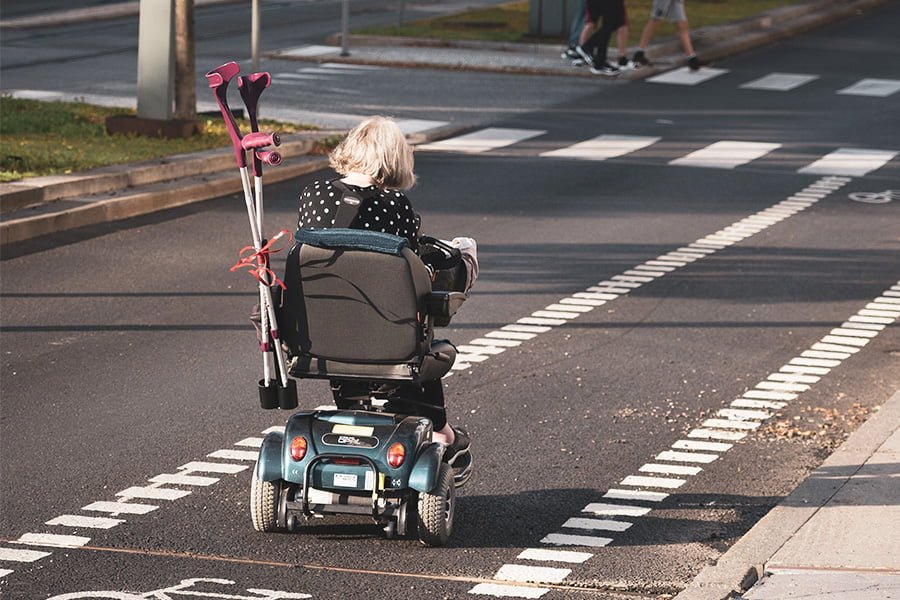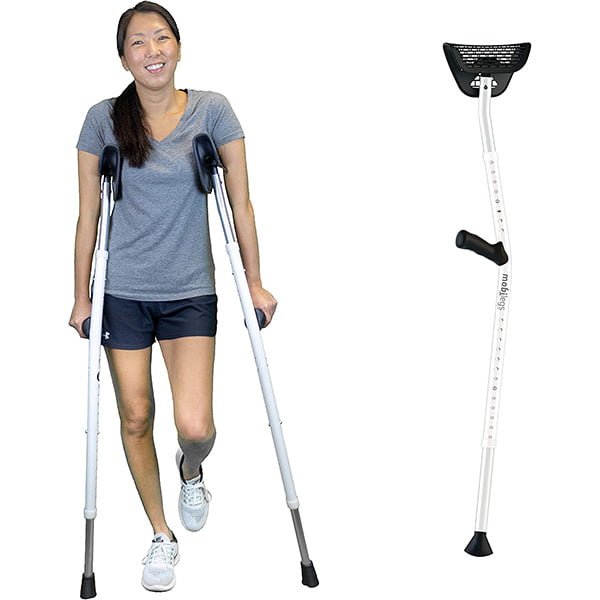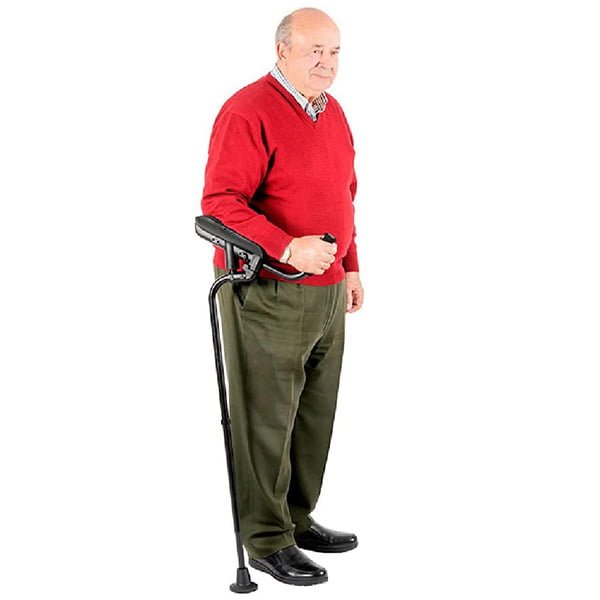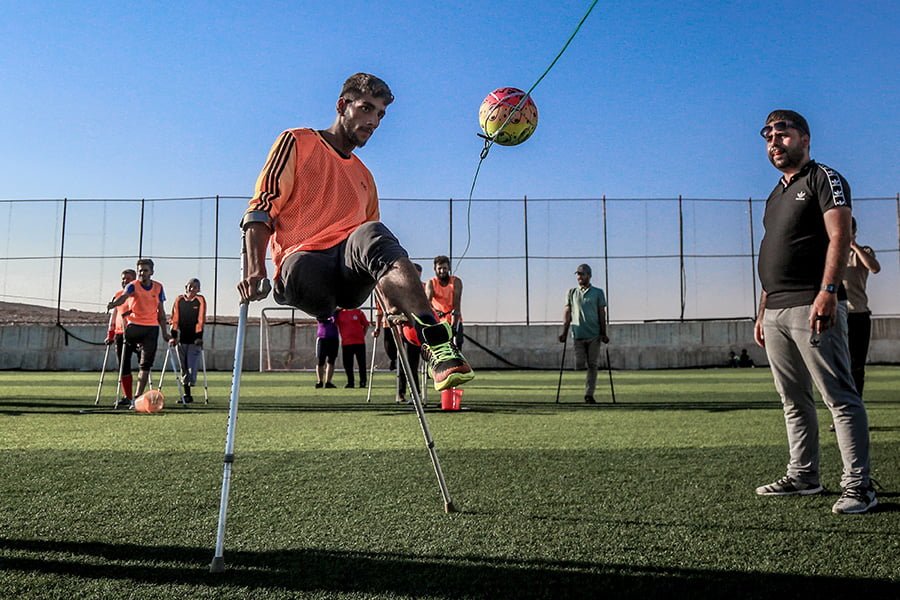Ergonomic crutches, the cornerstone of modern mobility assistance, are drastically altering the perception of assisted movement. This game-changing innovation brings relief to many individuals grappling with mobility challenges.

The Evolution of Crutches
The realm of crutches has witnessed dramatic metamorphosis over the years. Traditional crutches, while instrumental, were often linked to discomfort and additional strain. Ergonomic crutches have been designed to negate these issues, thus elevating the user’s experience.
The Genesis of Ergonomic Crutches
Ergonomic crutches were conceived with the sole intention of amalgamating comfort with functionality. Each aspect of an ergonomic crutch is meticulously designed to adapt to the user’s body mechanics, thus reducing the stress on the arms and wrists.
Breaking Down the Design
- Ergonomic Grip: These crutches come with a specially designed grip that follows the natural wrist and hand position, reducing pressure points and nerve damage risks.
- Adjustable Height: To suit individuals of various heights, these crutches offer easy adjustment options.
- Enhanced Stability: The wide footprint of the crutches adds an extra layer of stability and security.
Ergonomic Vs Traditional Crutches
Contrasting ergonomic crutches with traditional ones highlights the dramatic difference in user comfort and mobility.
| Feature | Ergonomic Crutches | Traditional Crutches |
|---|---|---|
| Comfort | High | Medium |
| Pressure on Arms/Wrists | Low | High |
| Stability | High | Medium |
Benefits of Using Ergonomic Crutches
Improved Comfort
One of the most significant benefits of ergonomic crutches is enhanced comfort. They offer better grip, support, and balance, reducing the pain and discomfort experienced when using traditional crutches.
Enhanced Stability and Support
Ergonomic crutches are designed to provide better balance and stability. This is due to their advanced design and the use of innovative materials.
Reduced Fatigue
With traditional crutches, fatigue can set in very quickly. However, ergonomic crutches are designed to alleviate this problem, making it easier for you to move around for longer periods.
Different Types of Ergonomic Crutches
Forearm Crutches
Also known as elbow crutches, these offer a cuff that encircles your forearm, providing superior stability.
Underarm Crutches
These ergonomic crutches come with a padded top that rests under your arm, reducing discomfort and increasing ease of movement.
Platform Crutches
These are designed with a flat platform for your forearm to rest on, allowing for maximum comfort and stability.
Ergonomic Crutches in the Marketplace
There are various models available, each designed to cater to different needs. The best ergonomic crutches stand out based on user comfort, durability, and price.
Top 4 Best Ergonomic Crutches Currently in the Market




Tips for Choosing the Right Ergonomic Crutches
Consider Your Physical Needs
Everyone is unique, and the same applies when choosing the right crutches. Consider your strength, balance, and specific injury or condition.
Pay Attention to Size and Adjustability
It’s important that your crutches fit you perfectly. Look for models that are adjustable in height and arm length.
Material and Durability Matter
The material of your crutches matters! Consider something light but durable, like aluminium or carbon fibre.
Proper Use and Maintenance of Ergonomic Crutches
Once you’ve chosen the right ergonomic crutches, it’s crucial to learn how to use them correctly to prevent falls or further injury. Here are some tips:
- Adjust properly: Ensure your crutches are the right height. When you stand, the handgrip should be at the same height as your hip. Your elbows should be slightly bent when you hold the handgrips.
- Walk correctly: Remember to put your crutches about one foot ahead when you walk. Keep your affected leg off the ground and balance your weight on the handgrips.
- Maintain your crutches: Regularly check the rubber tips at the bottom of your crutches for wear and replace them if needed. If your crutches are foldable, ensure the joints are secure.
Thoughts
Ergonomic crutches, while a relatively new entrant, are undeniably transforming the landscape of mobility aids. By integrating user comfort and clinical benefits, these crutches represent a major leap in assisted mobility.
FAQs
1. What are ergonomic crutches?
Ergonomic crutches are designed with the human body in mind. They offer superior comfort, stability, and ease of use compared to traditional crutches.
2. Are ergonomic crutches better than traditional crutches?
Yes, ergonomic crutches are generally more comfortable, reduce strain on the upper body, and enhance stability, offering a significant improvement over traditional crutches.
3. Are ergonomic crutches suitable for long-term use?
Indeed, they are designed specifically to reduce the complications often associated with prolonged use of traditional crutches, like nerve damage and muscle strain.
4. How to choose the right ergonomic crutch?
Consider factors like adjustability, weight, and cost. Personal comfort and ease of use should also be top priorities.
5. Can ergonomic crutches improve posture?
Absolutely. Ergonomic crutches are designed to promote an upright posture, helping to maintain balance and prevent the hunched back often seen in traditional crutch users.

